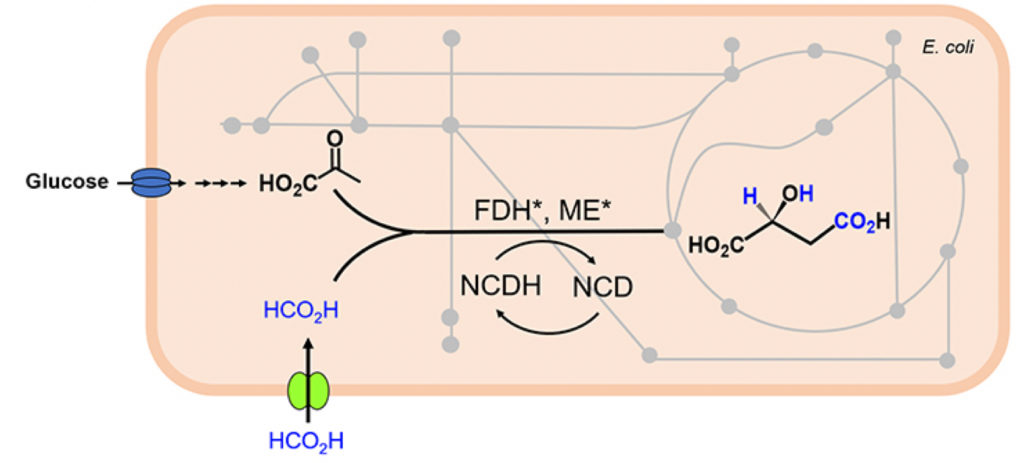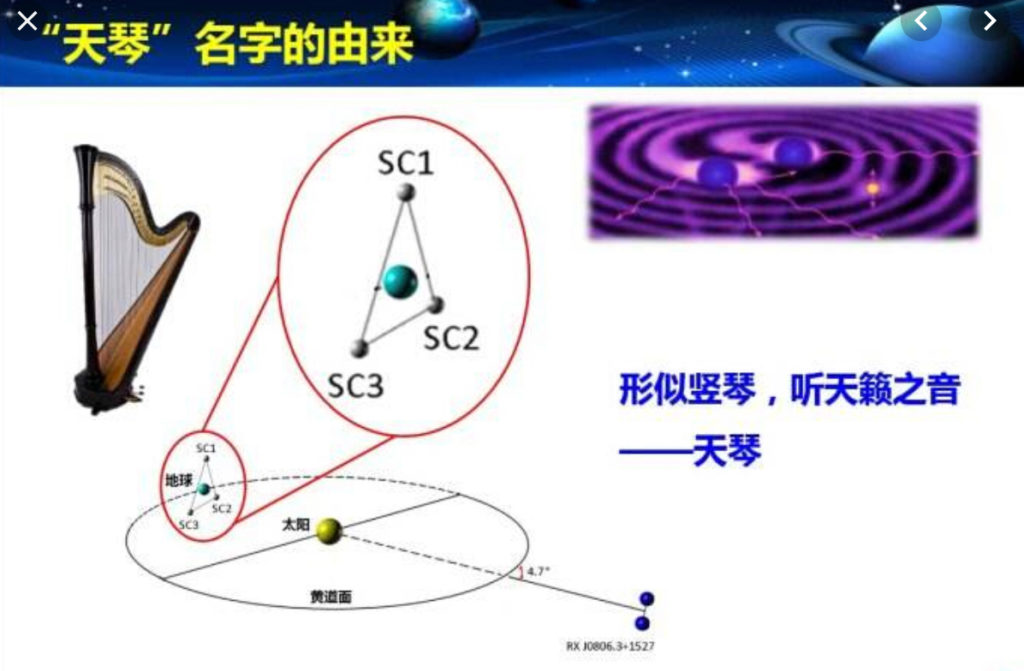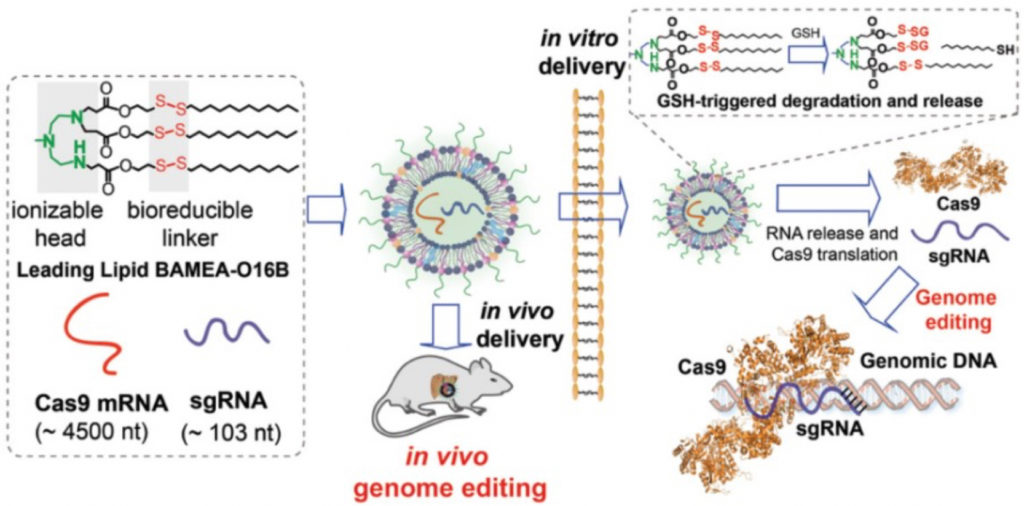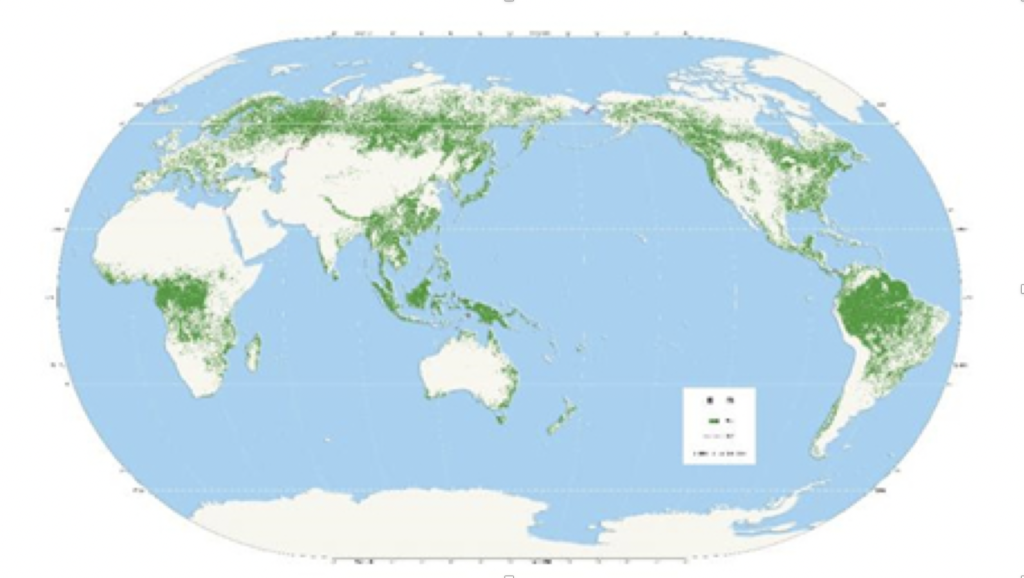China in Africa
China’s Aerospace Information Research Institute (AIR) develops forecast model for desert locust migration
Based on the Digital Earth Science Platform of AIR, teams around HUANG Wenjiang and DONG Yingying have used multi-source earth observation data, meteorological data, field data, and self-developed models and algorithms to analyze putative paths of desert locust which presently plague East Africa and Southwest Asia. developed by AIR. They conclude that if the locusts in Pakistan and India cannot be controlled effectively and when the Southwest Monsoon is extremely strong, there may be some probability for the locust moving from India to Myanmar via Bangladesh, and a higher risk to invade China’s Yunnan and Tibet from May to June 2020.
CAS news release, February 27, 2020

China has launched the „Pig Model Project“ (PMP)
Following an International Forum on Animal Biotechnology, the Chinese Academy of Engineering has announced that the country will launch the international pig model project (PMP, http://www.pigmodel.org). Organized by the Ministry of Science and Technology and...
China rüstet Beidou-Satellitensystem für globale Reichweite auf
Zwei Beidou-Satelliten der dritten Generation, die ersten ihrer Art, wurden am 5. November von einer Long March 3B Trägerrakete vom Xichang Satellite Launch Center in der Provinz Sichuan gestartet und in eine mittlere Erdumlaufbahn gebracht. Die neuen...
China plant erstes “Carbon Emission Assessment and Engineering Lab” in Tsingtao
Das QCEL soll lokale Emissionsdaten auswerten und Methoden, Werkzeuge und Modelle entwickeln, um der Stadtregierung von Tsingtao praktisch umsetzbare Emissions-arme Strategien vorzuschlagen. QCEL hat bereits mehr als drei Jahre auf diesem Gebiet gearbeitet und verfügt...
Chinas Markt wird digital und globaler
Im Gegensatz zur vorherigen Generation chinesischer Unternehmen, die sich bis zur Sättigung des Marktes auf das Wachstum im Inland konzentrierten, sind neu entstehende Start-ups besser in der Lage, eigene Ideen zu entwickeln und Chancen im Ausland zu erkennen. Bis...
Mikroalgen: mehr Biomasse und Lipide durch Engineering
Der Gruppe von XU Jian am Qingdao Institute of Bioengineering and Bioprocess Technology (QIBEBT) der CAS ist es gelungen, die Biomasse- und Lipidausbeuten der Mikroalge Nannochloropsis oceanica wesentlich zu steigern. Sie entdeckten bei Transkriptom-Analysen, daß die...
China könnte bald Treibstoff-Ethanol nicht nur aus Biomasse herstellen, sondern auch aus Kohle
Gemäß dem 13. Fünfjahresplan Chinas für Energie soll das Land bis 2020 300 Millionen t Treibstoff-Ethanol aus Biomasse produzieren und damit 150 Millionen t fossilen Treibstoff ersetzen. Allerdings wurde inzwischen auch die Herstellung von Treibstoff-Ethanol aus Kohle...
China and Africa cooperate on anti-desertification program
CAS Xinjiang Institute of Ecology and Geography which has long-standing experience in desertification control and ecological restoration signed a memorandum with the the Panafrican Agency of the Great Green Wall (PAGGW) to support the African Great Green Wall...
Zahnklinik der Universität Peking entwickelt personalisierte Zahnimplantate””
Die Gruppe von TANG Zhihui entwickelt eine Methode, die extrahierte Zähne durch 3D-gedruckte Implantate ersetzt. Dabei wird der zu extrahierende Zahn vor der Operation mittels Dentalkegelstrahl-Computertomographie (CBCT) vermessen und die 3D-Daten mit einem 3D-Drucker...
Shenzhen’s Direct Genomics’ GenoCare Sequenzer drängt in chinesische Kliniken
Das Gerät baut auf der Helicos-Technologie auf, benutzt „sequencing by synthesis“-Chemie und bestimmt die Fluoreszenz eines Einzelmoleküls über interne Totalreflexionsmikroskopie, https://en.wikipedia.org/wiki/Helicos_single_molecule_fluorescent_sequencing. Es...
Chinas Landwirtschaft setzt auf Kompositfolien aus Polypropylencarbonat
Auch in China stellen Plastik-Rückstände in der Umwelt ein großes Problem dar („white pollution“, 白色污染). Das chinesische Landwirtschaftsministerium führt deshalb seit 2015 einen „National Biodegradable Film Evaluation Test“ durch, bei dem 6 verschiedene biologisch...
Die neuen Fuxing-Züge („Renaissance“) der chinesischen Staatsbahn fahren mit 350 km/h
Die geräumigen Züge mit freiem Internetzugang und Elektroanschluß an jedem Sitz fahren ab sofort 10 Stationen im Raum Peking - Tianjin - Hebei an und bedienen ab 21. September 2017 auch Chinas Hauptstrecke Peking - Shanghai. Sie benötigen dann für die 1300 km Distanz...
Im Abwasser chinesischer Städte herrscht das „Antibiotika-Resistom“ und bedroht die Bewohner
China ist der weltgrößte Produzent von Antibiotika, und diese werden auch reichlich verordnet oder auch ohne Rezept eingenommen, wie kürzlich an der Belastung des Urins von Schulkindern nachgewiesen wurde. Auch in der Landwirtschaft werden Antibiotika häufig...
China baut eine künstliche Mars-Station
Die Station wird im mongolisch-tibetanischen Bezirk Haixi in Chinas nordwestlicher Provinz Qinghai gebaut. Die Landschaf des riesigen Bezirks (91 % der Fläche Deutschlands) ähnelt einer Marslandschaft. Ein „Mars-Camp“ soll Touristen anlocken und mit Informationen über...
Computer und Roboter steuern mit Augenzwinkern!
Eine Arbeitsgruppe um Chenguo HU an der Chongqing University hat eine Datenbrille mit einem triboelektrischen Nanogenerator (TENG) ausgestattet, der kleinste Bewegungen der Haut im Augenwinkel detektiert und in ein elektrisches Signal umwandelt. Durch Zwinkern kann...
Schanghai lässt sich ein Stammzellforschungszentrum bauen – von Japan!
Der Auftrag kommt vom Shanghai Institute of Advanced Studies und wurde als Demonstrationsprojekt vom japanischen METI (Projektträger NEDO) mit dem japanischen Architekturbüro Yasui und den Unternehmen Pacific Consultants und Sanki Engineering realisiert. Eine...
Window-to-China
People’s Daily selects China’s 8 major S&T achievements in 2019
According to the journal, these are:
- developing clonal seeds from hybrid rice
WANG Kejian, from the China National Rice Research Institute and the Chinese Academy of Agricultural Sciences, conducted simultaneous genome engineering of meiosis and fertilization genes to develop the clonal seeds
- A slurry tunnel-boring machine challenged a cross-sea project
A 12.26m diameter slurry tunnel boring machine (TBM) designed by CREG excavated a 2.9km long double-track metro rail tunnel under the Suoyu Bay in the city of Dalian in northeast China
- Beijing Daxing International Airport broke several world records
The roof of the terminal building consists of a central skylight, six strip skylights and eight bubble-shaped windows. It needed to be spliced with 12,800 pieces of glass in different shapes and materials, connected by 12,300 spherical nodes and more than 60,000 rods. The roof looks like it is made up of clouds, but weighs more than 30,000 tons

- a first rocket into space was launched from a sea platform
A Long March 11 solid-propellant carrier rocket blasted off at 12:06 pm on June 5 from a mobile launch platform — a modified submersible craft — in the Yellow Sea off the eastern province of Shandong and then sent seven satellites into orbit about 600 kilometers above the Earth,

- a high-speed maglev train prototype was tested
a prototype magnetic-levitation train with a designed maximum speed of 600 kilometers per hour was launched in Qingdao,

- work progressed on the International Thermonuclear Experimental Reactor (ITER) Tokamak
a China Nuclear Power Engineering (CNPE)-led consortium won the bid for an installation project in a Tokamak Assembly Contract 1 (TAC1)
- China’s first private commercial rocket took off into orbit
iSpace, a Beijing-based private rocket company and China’s answer to SpaceX, successfully launched its prototype “SQX-1 Y1” solid rocket from Jiuquan Satellite Launch Center, and
- Tianhe-2 supercomputer works out the criterion for quantum supremacy
A world’s first criterion for quantum supremacy was issued on Nov.4 in research jointly led by Prof. Wu Junjie at the National University of Defense Technology.
During the research process, a boson sampling task was performed on the Tianhe-2 supercomputer.
© People’s Daily Engish edition, December 24, 2019
CAS Dalian Institute of Chemical Physics group constructs microbial cell which turns CO2 into malate by reductive carboxylation
The group of ZHAO Zongbao has built an E.coli cell which uses a non‐natural cofactor and formate driven system for reductive carboxylation of pyruvate. To this end, a formate dehydrogenase (FDH) mutant, FDH*, that favors a non‐natural redox cofactor, nicotinamide cytosine dinucleotide (NCD), generates a dedicated reducing equivalent at the expense of formate. By coupling FDH* and NCD‐dependent malic enzyme (ME*), the successful utilization of formate as both CO2 source and electron donor for reductive carboxylation of pyruvate was shown, with a perfect stoichiometry between formate and malate.
https://doi.org/10.1002/ange.201915303

China University of Science and Technology: superelastic and fatigue-resistant carbon nanofiber aerogels resistant to temperature changes
YU Shuhong, LIANG Haiwei and colleagues at the University of Science and Technology of China have reported a method for thermally transforming bacterial cellulose into graphitic carbon nanofiber aerogels (CNFAs) through controlled pyrolysis. The carbon aerogel is based on the hierarchical structure of bacterial cellulose, and maintains superelasticity without plastic deformation after 2 × 106 compression cycles. It shows excellent superelasticity and fatigue resistance that do not change with temperature betweens -100 to 500 ° C.
https://doi/10.1002/adma.201904331

Chinese gravity wave project (“Lyra project”) enters stage of space test
The “Lyra project” was initiated by the CAS in March 2014, after basic research in a cave laboratory at Huazhong University of Science and Technology by Mr LU Shun in 1994. According to the plan, around 2035, three satellites will be placed in an orbit approximately 100,000 km away from earth to form an equilateral triangle with a side length of approximately 170,000 km. This setup will serve as a gravitational wave observatory in space and explore gravitational waves. On December 20, a Long March No. 4B carrier rocket launched a “Lyra-1” satellite and started the space test phase.
Xinhuanet, December 23, 2019

CAS National Institute of Software Science announces quantum programming platform isQ
Released features include mainly compilers, simulators, model detection tools, and theorem proving devices. It is expected to provide more related software to China’s proprietary quantum computer. The platform includes a compiler that first converts a quantum program written in a high-level language into a command language, and then processes it with another tool. A simulator simulates the operation of the quantum program on a conventional computer and checks the operation results. It plays an important role in the design and testing of quantum programs at this stage. Model detection tools can be used to verify various properties of quantum systems. The theorem prover has realized the quantum Hoare logic developed by the team. It can verify the accuracy of quantum programs, overcome computational time and storage capacity limitations in conventional computers, and provide important support for the design of large-scale quantum programs.
Japan JST China news, December 20, 2019
Zhejiang research center launches first urine-based HPV test
Human papilloma virus (HPV) can cause cervical cancer. 9-valent vaccine can neutralize 90% of cancer-causing subtypes, but cannot protect women who have already been infected with HPV.
Chen Yiyou, Chief Scientist of Nuohui Health Research Center in Zhejiang, has designed a new test for HPV in urine. With this test, detection of the currently recognized high-risk viruses are possible. Sensitivity of HPV type16 and type18 are very high, and sensitivity of detection of precancerous lesions reaches 96.8%.
Sohu news release, December 24, 2019
China has built 126.000 5G base station and will fully cover municipal cities by 5G by the end of 2020
In 2020, network speed will be improved and costs reduced, with precisely targeted cost reductions in the areas of assistance for the poor and the disabled. Comprehensive countermeasures for nuisance calls will be put in place. In line with the commercialization of 5G, new technologies will be applied such as 4K/8K and virtual reality (VR) / augmented reality (AR), and middle-class and high-class information services will be increased. Software and information technology services revenue is expected to increase by 15%, telecommunications business volume at constant prices is expected to increase by 20% year-on-year, and Internet revenue is expected to increase by 20%.
Japan JST China news, December 24, 2019
Sichuan Province obtains National Key Laboratory for Early Warning on Disasters
The new Chengdu High and New Disaster Mitigation Research Institute will be built jointly with the CAS Institute of Mechanics and cooperate with the National Early Warning Information Release Center. A major target is improved warning on earthquakes.
Japan JST China news, December 25, 2019
CAS Institute of Chemistry designs new CRISPR/Cas9 method for gene editing based on a liposome vector
The group of WANG Ming has developed a new CRISPR/Cas9 genome editing procedure based on the molecular self-assembly between cationic liposomes and Cas9 messenger RNA (Cas9 mRNA) nanoparticles. They showed that after the mRNA nanoparticles are injected through the tail vein of a mouse and are in mouse parenchymal cells, they are degraded by reduced glutathione in the cell, releasing Cas9 mRNA and translating Cas9 nuclease for gene editing. Using this method, GFP gene editing efficiency was as high as 90%).Cas9 mRNA nanoparticles.
CAS news release, December 27, 2019

Nankai University team develops synthetic spider silk
A team around LU Zunfeng at Nankai University in Tianjin has prepared an artificial spider silk made from polyacrylic acid and silica nanoparticles. It consists of hierarchical core-sheath structured hydrogel fibers, which are reinforced by Zn ion doping and twist insertion. The fiber exhibits a tensile strength of 895 MPa and a stretchability of 44.3%, achieving mechanical properties comparable to spider silk. The material also presents a high toughness of 370 MJ m−3 and a damping capacity of 95%.
Nat Commun 10, 5293 (2019) doi:10.1038/s41467-019-13257-4
China expands meteorological satellite network along the “belt and road”
According to the China Meteorological Administration (CMA), data receiving equipment for meteorological data from Fengyun-2H satellites has been delivered to to Kyrgyzstan and Mozambique. China has launched a total of 17 Fengyun meteorological satellites, with seven currently in orbit. The CMA has organized nine international training courses on the application of the satellites since 2013, with nearly 200 trainees attending.
Xinhua news release, November 16, 2019
China’s top 10 advances in agriculture 2018
At the Forum 2019 on Science and Technology for Agricultural and Rural Development in in Nanjing, a poll by experts on the 10 most significant advances in agricultural science were announced. These were:
1. Metabolomics in search of the “lost tomato flavor”. HUANG Sanwen, CAAS Shenzhen Institute of Agricultural Genomics
2. “Selfish genes” controlling fertility of indica-japonica hybrid rice crosses
WAN Jianmin, CAAS Crop Science Research Institute and Nanjing Agricultural University
3. Identification of genes with both high yield and resistance to rice blast
LI Jiayang, CAS Institute of Genetics and Developmental Biology and CHEN Xuewei, Rice Research Institute of Sichuan Agricultural University,
4. Identification of key genes that balance yield and fertilizer efficiency in co-regulation of carbon and nitrogen metabolism
FU Xiangdong, CAS Institute of Genetics and Developmental Biology
5. 3000 rice genomes resequencing for post-genomic rice breeding
LI Zhikang CAAS Institute of Crop Sciences
6. Genome resequencing of 419 upland cotton core germplasms in major cotton-growing countries such as China, the United States, and Australia, for better cotton fiber quality and yield
MA Yingying, Hebei Agricultural University, and DU Xiongming, CAAS Cotton Research Institute
7. High-density mutation map of cotton diploid population showing the molecular evolution of Asian cotton from south to north.
LI Fuguang, CAAS Cotton Research Institute
8. Vaccine which blocks transmission of H7N9 virus from birds to humans.
CHEN Hualan CAAS Harbin Veterinary Research Institute of the Chinese Academy of Agricultural
9. Transferable colistin resistance genes in healthy people found as high as 15%, requiring further drug resistance control and controls in livestock breeding in China.
SHEN Jianzhong, China Agricultural University
10. Molecular mechanism of multiple pattern recognition of receptor-mediated activation of the silk fibroin kinase cascade in plant resistance
Zhou Jianmin CAAS Institute of Genetics and Developmental Biology
Guangming Daily news, November 20, 2019
CAS announces “Earth Big Data Prototype”
At the China Digital Earth Convention in Beijing, an “Earth Big Data Prototype” system was announced which integrates “balls” of big data scattered around the earth into a “necklace” of big data through standardized display. This project is part of the 2030 Agenda of the United Nations, a digital “Belt and Road”, and a panoramic view of China.
Xinhua news release, November 20, 2019
Chinese team announces world’s first forest distribution map at 30m resolution
HE Guojin of the CAS Aerospace Information Innovation Research Institute has released a Global Forest Cover Map (GFCM) of 2018 at a 30-meter resolution. The map is based on Landsat satellite data and China-made high-resolution satellite data, using machine learning and big data analysis technology to achieve high-precision automatic extraction of global forest coverage. It correlates with the many goals of sustainable development in the UN 2030 Agenda.
CAS news release, Nov. 20, 2019

Nanjing team prepares porc muscle meat from porc stem cells
A team led by ZHOU Guanghong at Nanjing Agricultural University cultivated pig muscle stem cells for 20 days and harvested 5 g of muscle meat. This is the first meat developed from muscle stem cells in China. According to Zhou, the cultured meat had similar texture and color to ordinary minced pork.
Global Times, November 21, 2019
